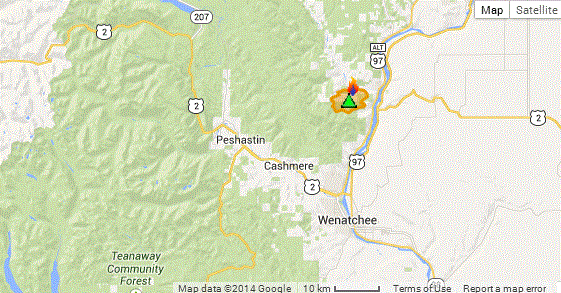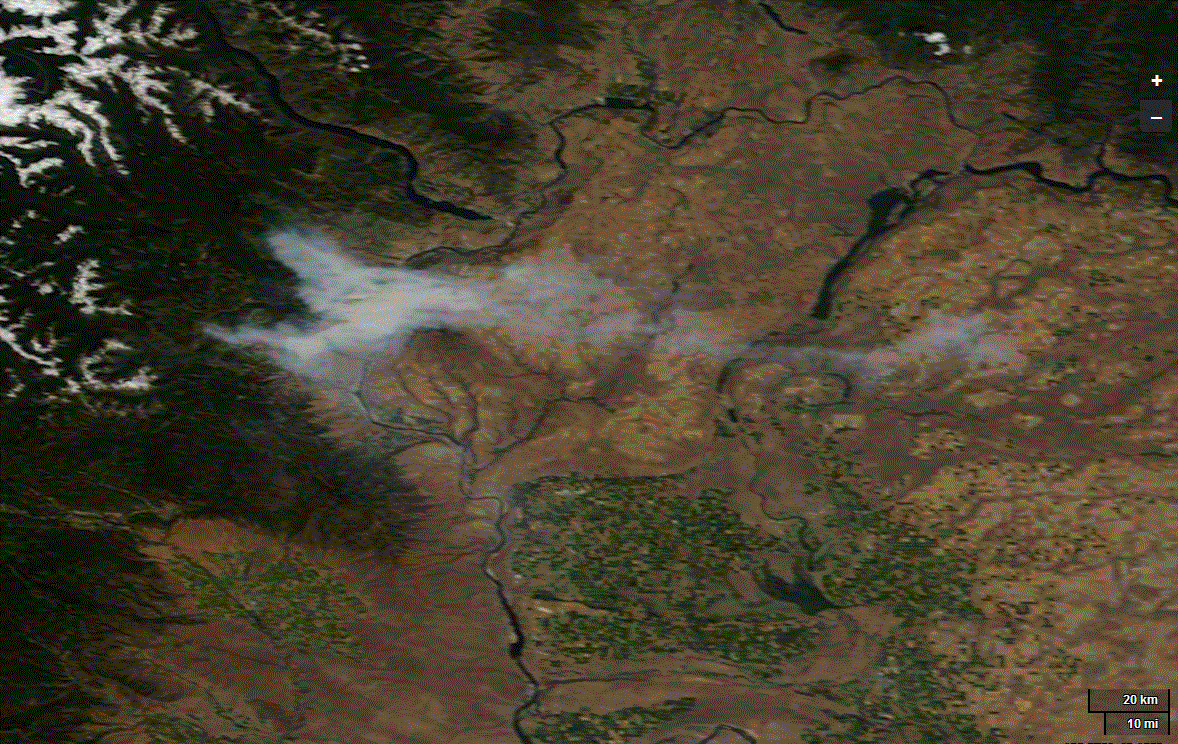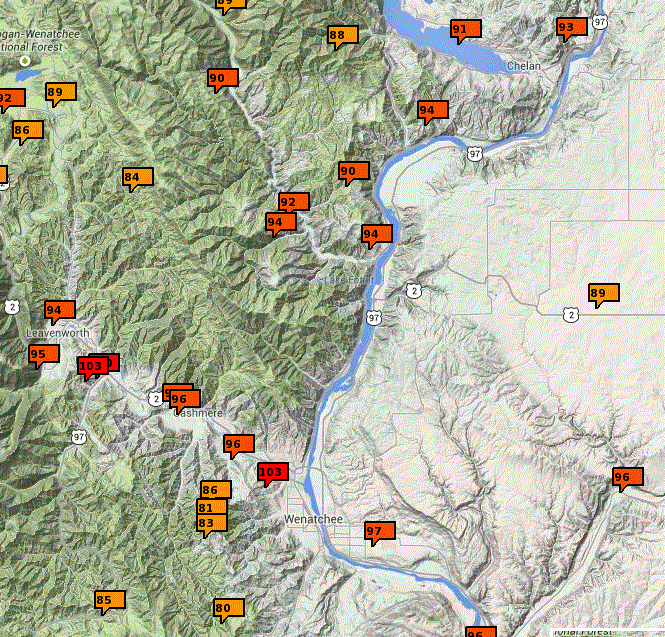The Mills Canyon Fire, north of Wenatchee (WA), has now grown to over 18,000 acres and is essentially uncontrolled at this time. Low humidities, hot temperatures, strong northwesterly winds on the ridges, and dry fuels have provided an explosive mixture.
Here is a map to get you oriented. The fire is centered in the foothills east if SR 97.
Let's begin by looking at two high-resolution MODIS satellite images, both of which clearly show the dense smoke emitted by the fire. In the earlier shot (top one), some smoke had pushed eastward into the Columbia basins, with some extending westward into some Cascade valleys. In the latter image, you can clearly see the location of the fire.
The smoke plume was dense enough and high enough to be picked up for a while by the National Weather Service Camano Island weather radar. Here is the proof. You see the red splotch north of Wenatchee? That's it.
The maximum temperatures today got into the mid-90s in the vicinity of the fire and will only get warmer tomorrow.
In fact the forecast from the Weather Channel for Wenatchee is way above 100F next week.
The latest WRF model surface air temperature forecast for tomorrow at 5 PM shows a baking Columbia Basin, shows upper 90s to low 100s.
And the relative humidity forecast for the same time is down to 10% or below:
But that is not all. The latest computer forecasts suggest the potential for thunderstorms over the Cascades and the plateau of eastern Washington over the weekend, which could lead to lightning strikes that could cause more fires.
This is going to be a very hot week for the Northwest. Ironically, the eastern U.S. will be unusually cool, associated with a trough of low pressure being termed POLAR VORTEX 2. (I am not making this up....search news in Google or Bing).
Want to be impressed? Here is the latest Climate Prediction Center 6-10 day forecast. Just amazing, isn't it. Huge warm anomaly in the west, even more intense cold anomaly in the east.
The 99 hour, GFS model upper level (500 hPa pressure level) forecast tells you why (see graphic). Ridge of high pressure in the west, trough in the east.
Keep cool....
Global Warming, the Media, and Coal Trains
I will be giving a talk in Friday Harbor and Eastsound, sponsored by the San Juan Island and Orcas Is. libraries.
I will be discussing the serious threat of global warming, how the media is generally doing a poor job in educating about this issue, and how mankind is really not taking it seriously (e.g., the coal trains).
Friday Harbor: July 22nd, 6:30 PM, The Mullis Community Center, 589 Nash St.
Orcas Island: July 23rd, 5:30 PM, Orcas Center
This blog discusses current weather, weather prediction, climate issues, and current events
Subscribe to:
Post Comments (Atom)
Lots of Snow in the Mountains....and the Seattle Times Gets it Wrong Again
First, we had strong winds, taking out the power to a quarter-million local residents. And then snow. The vigorous system that moved throu...

-
The latest model forecasts are consistent: an unusually powerful storm with extreme low pressure will develop rapidly offshore on Monday a...
-
An extraordinary storm will develop a few hundred miles off our coast on Tuesday, a storm every bit as strong as a Category 1 hurricane. B...









.gif)



The map with contours saying "probability of above", "probability of below" is a bit confusing. If it's red, very hot, why does it say things like "90% probability of above"? It seems there'd be a 90% probability of the temperature being *below* this.
ReplyDeleteAs I read the chart it is giving the probability of temps being above normal (orange to brown) or below normal (blue to black). Areas of dark red to brown are a "near certainty" to have higher than normal temps.
ReplyDelete